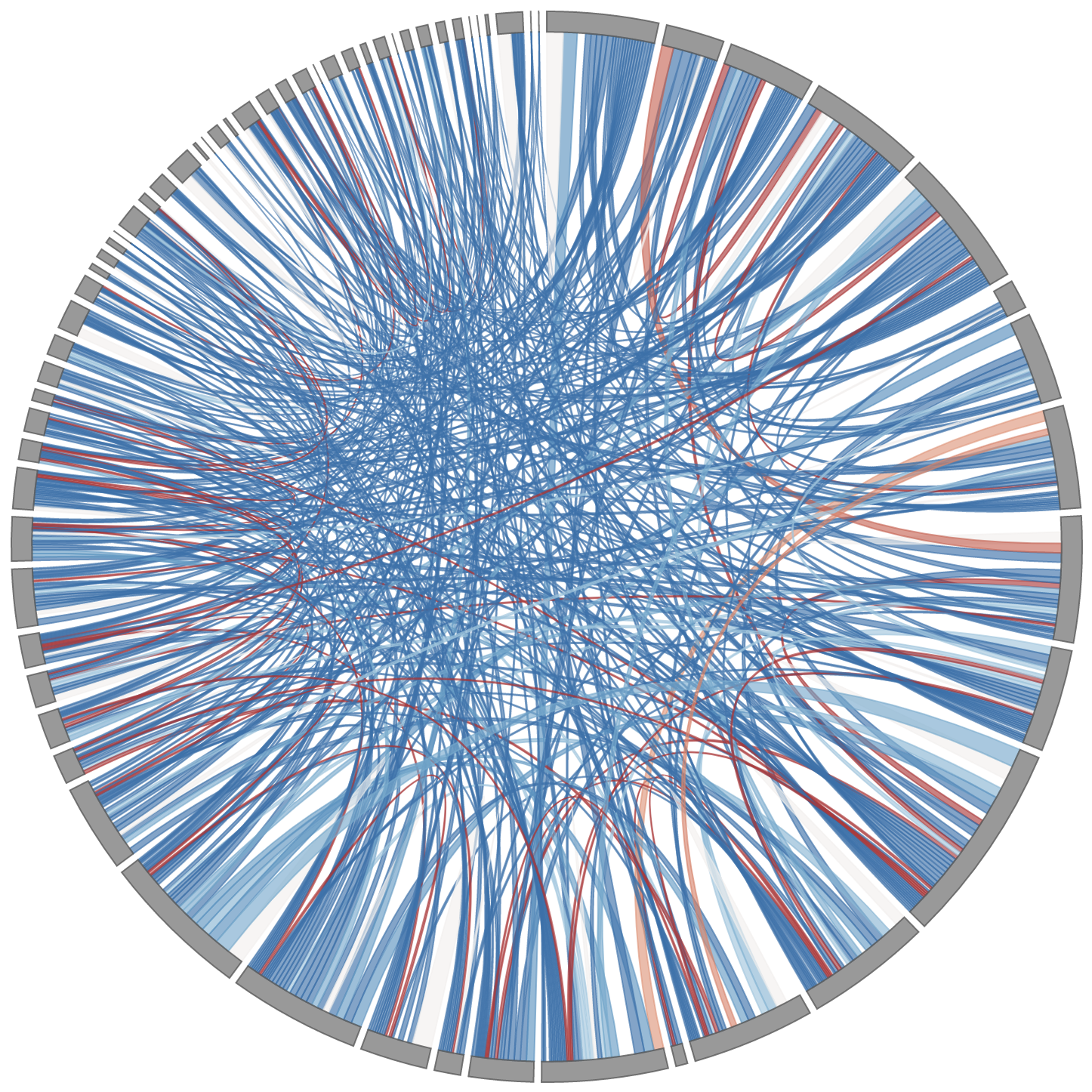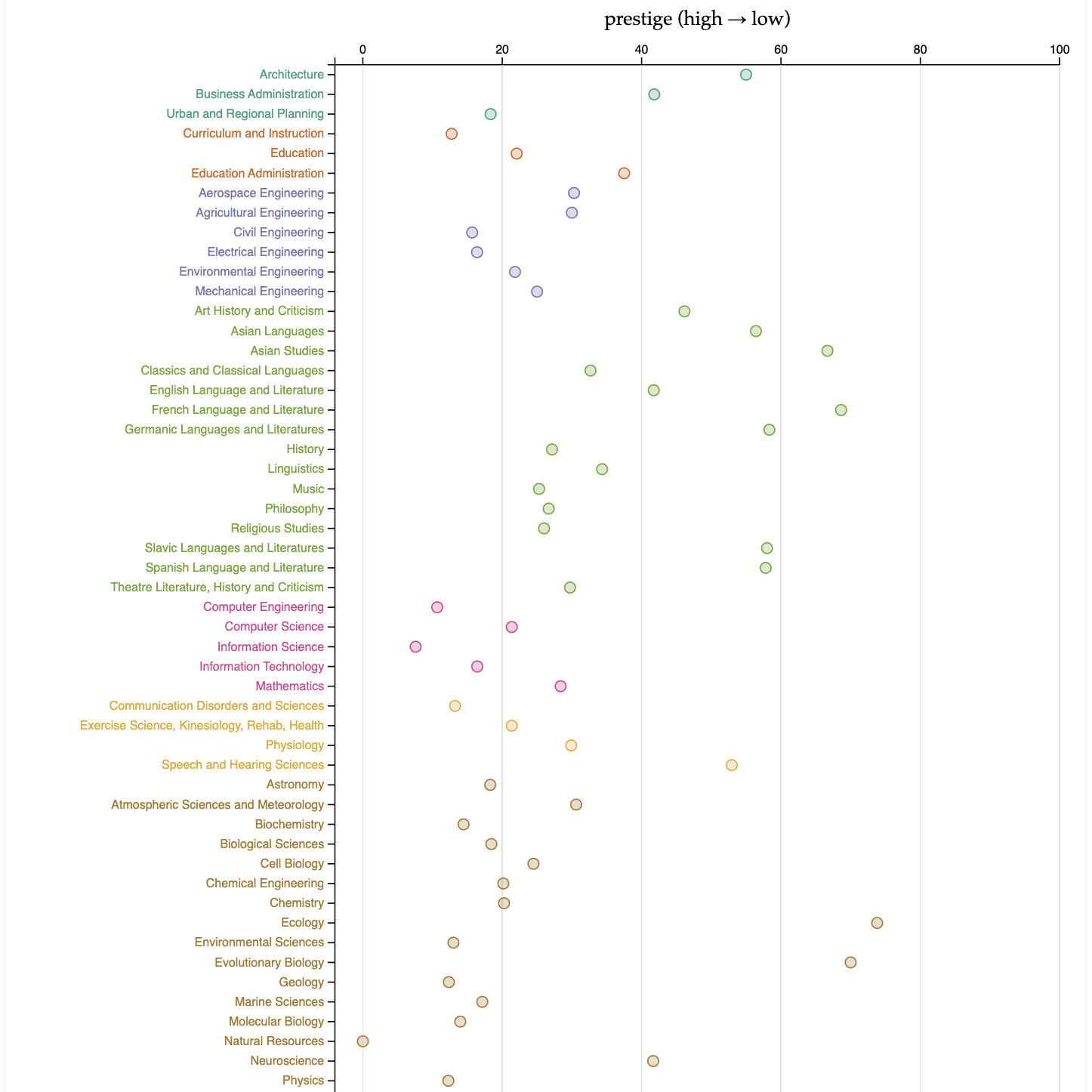Quantifying hierarchy and dynamics in US faculty hiring and retention
This page is a companion for the Nature article Quantifying hierarchy and dynamics in US faculty hiring and retention, written by Hunter Wapman, Sam Zhang, Aaron Clauset, and Daniel Larremore. It hosts visualizations of patterns in US faculty hiring, as well as links to deidentified data and replication code.
Journal Reference
K. H. Wapman, S. Zhang, A. Clauset, and D. B. Larremore, “Quantifying hierarchy and dynamics in US faculty hiring and retention.” Nature 1(2), 345 (2022).
Interactive Data Visualizations

move between universities
when they become professors.

rank, as measured by
prestige1 or production2.
1 A university’s prestige rank is a measure of its ability to place its graduates as faculty at other prestigious universities. We use SpringRank to infer prestige hierarchies across academia in toto and, separately, in each domain and field. In order for a university to have a prestige rank in a given field, it must employ faculty in that field and have trained at least one faculty member who is employed in that field.
2 A university’s production rank is a measure of how many faculty it has trained. Production ranks are calculated for academia in toto and, separately, for each domain and field. In order for a university to have a production rank in a given field, it must have trained at least one faculty member who is employed in that field.
Data and Code
Copyright 2022, Hunter Wapman & Daniel Larremore